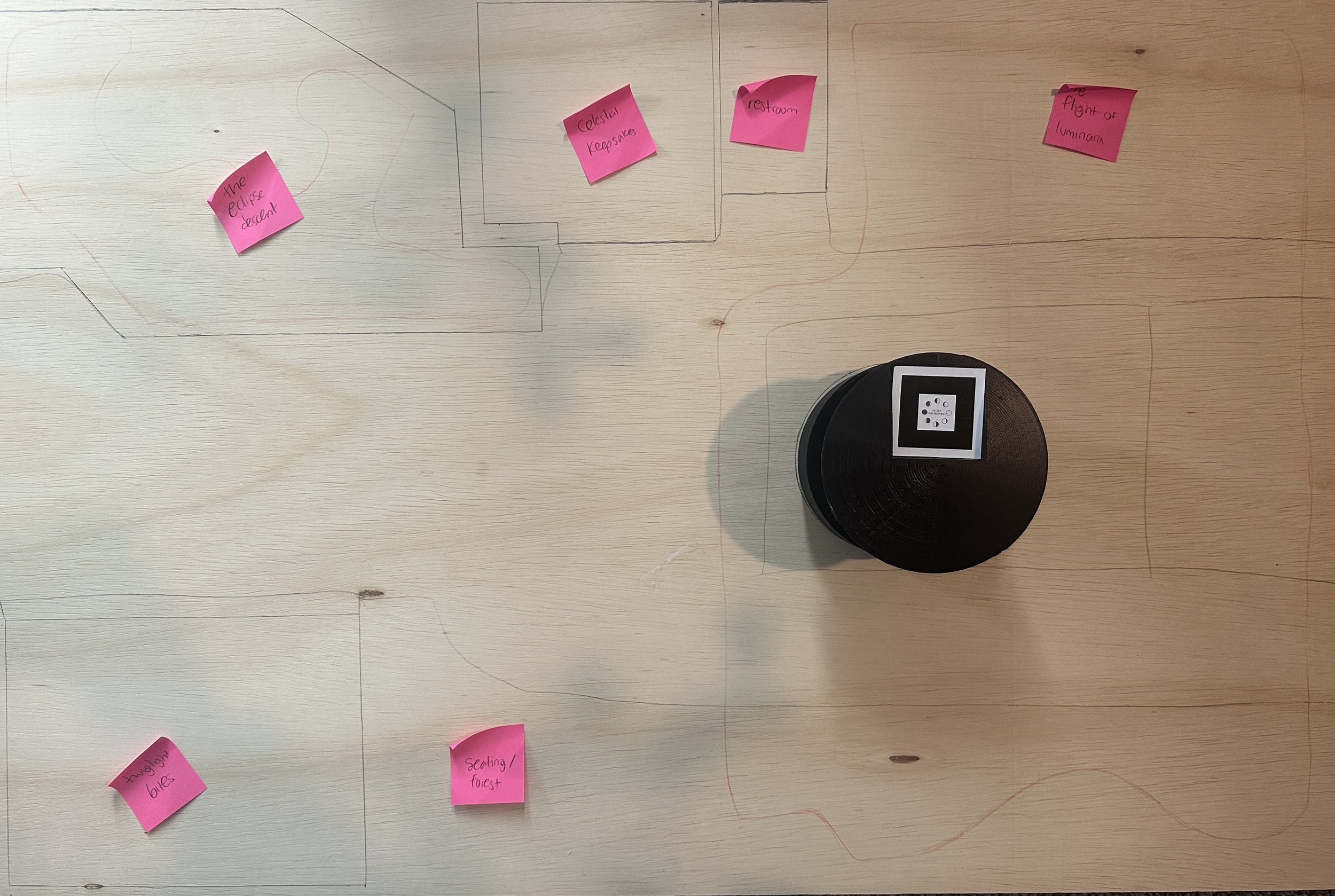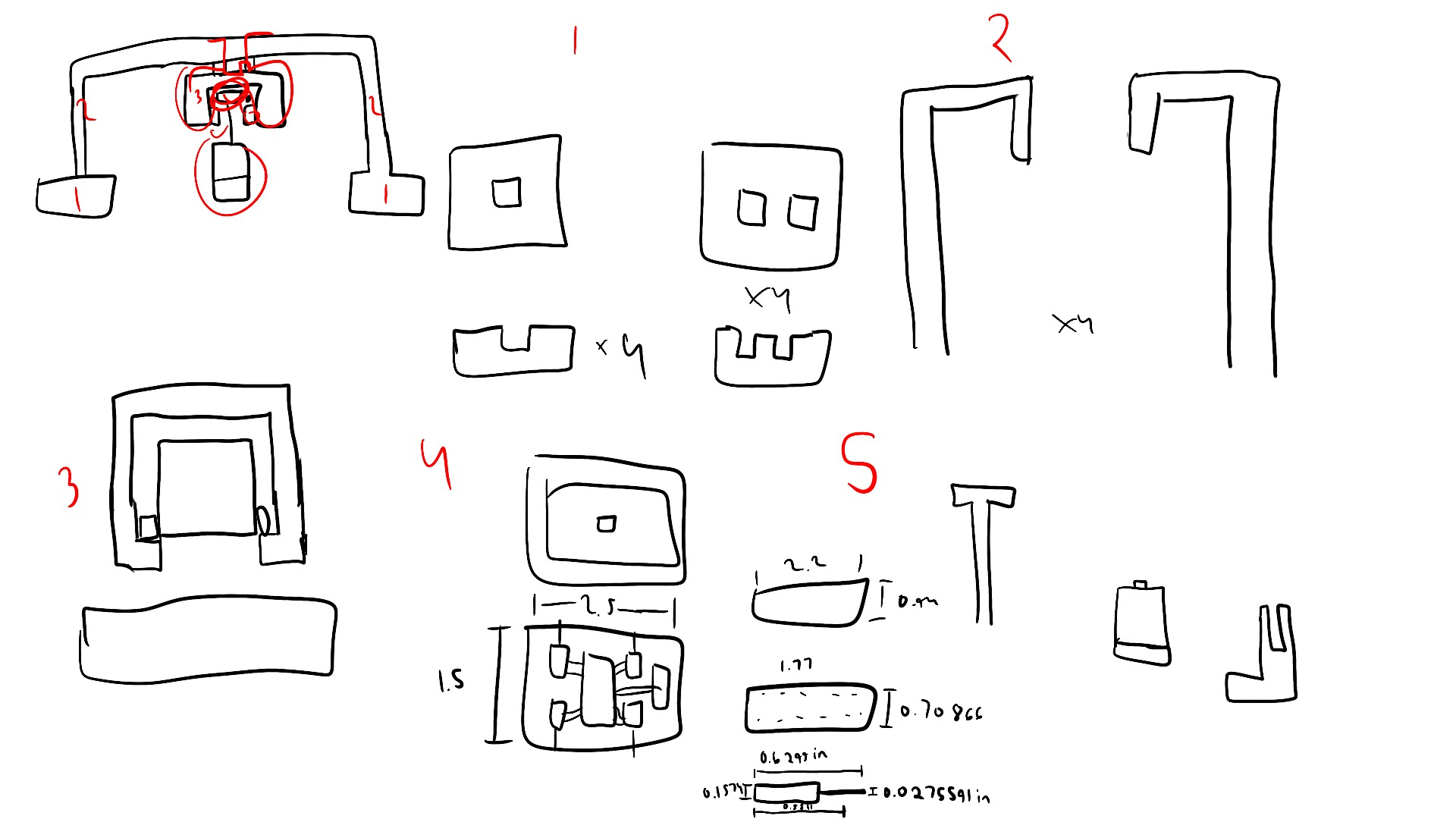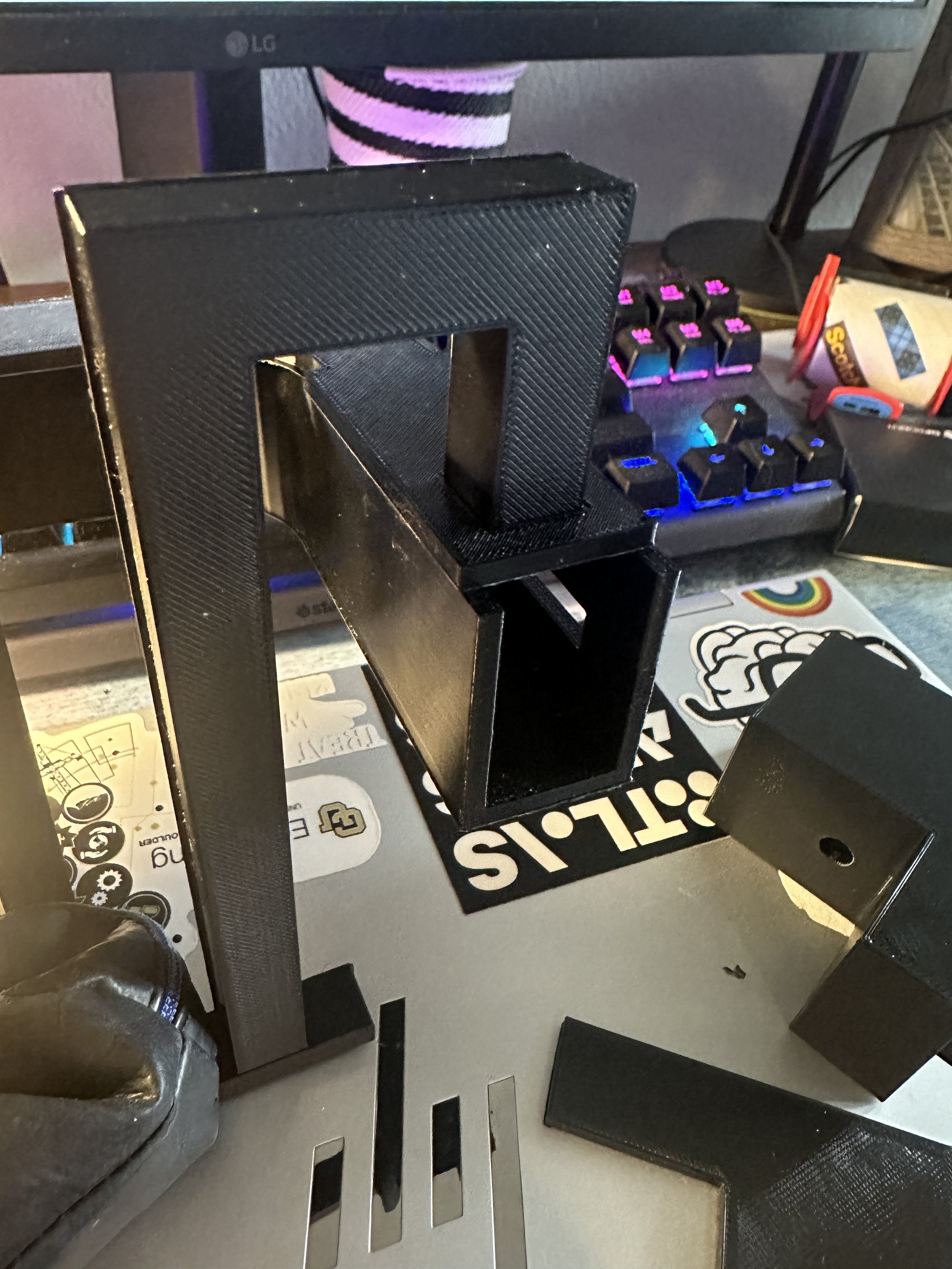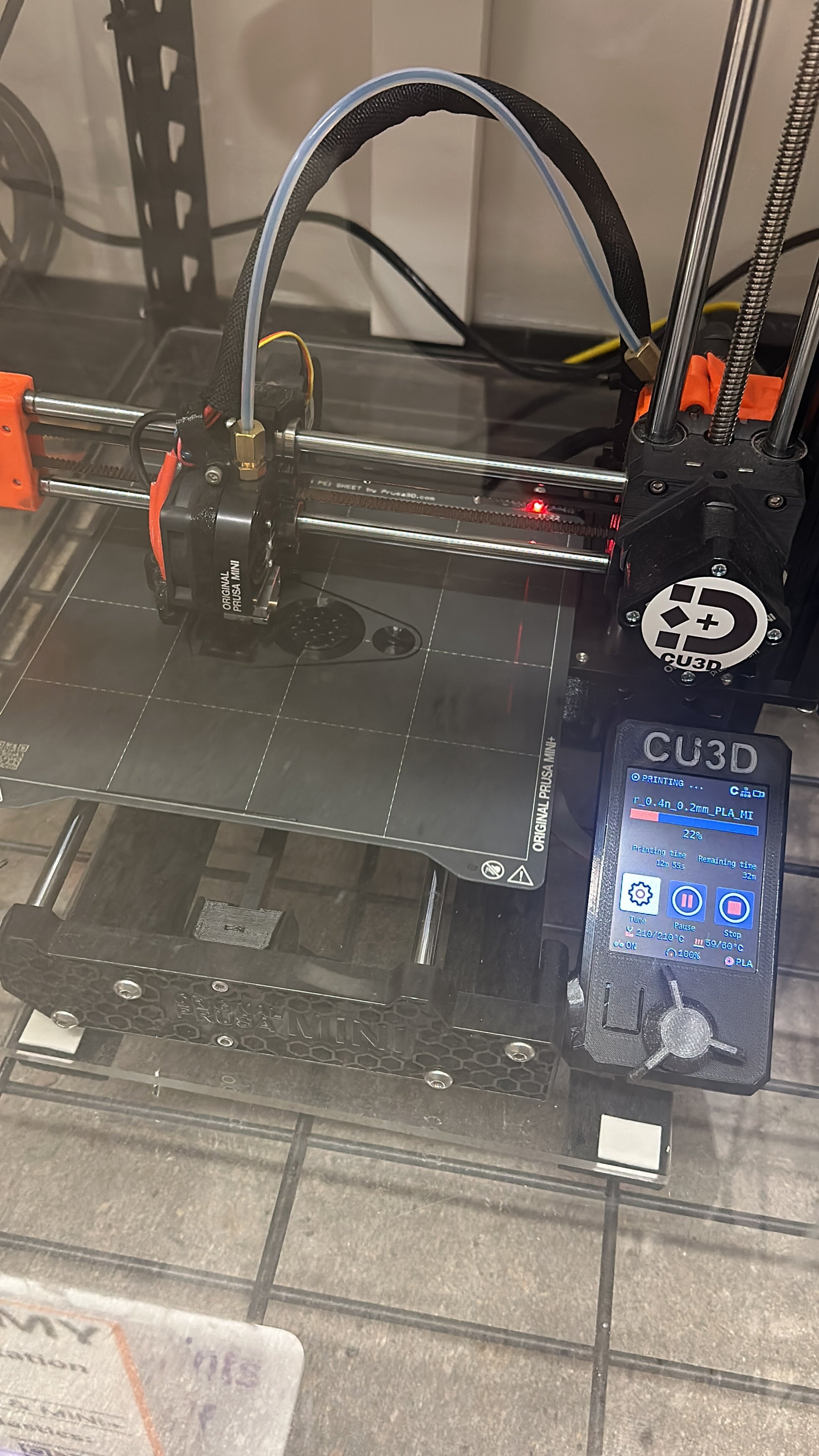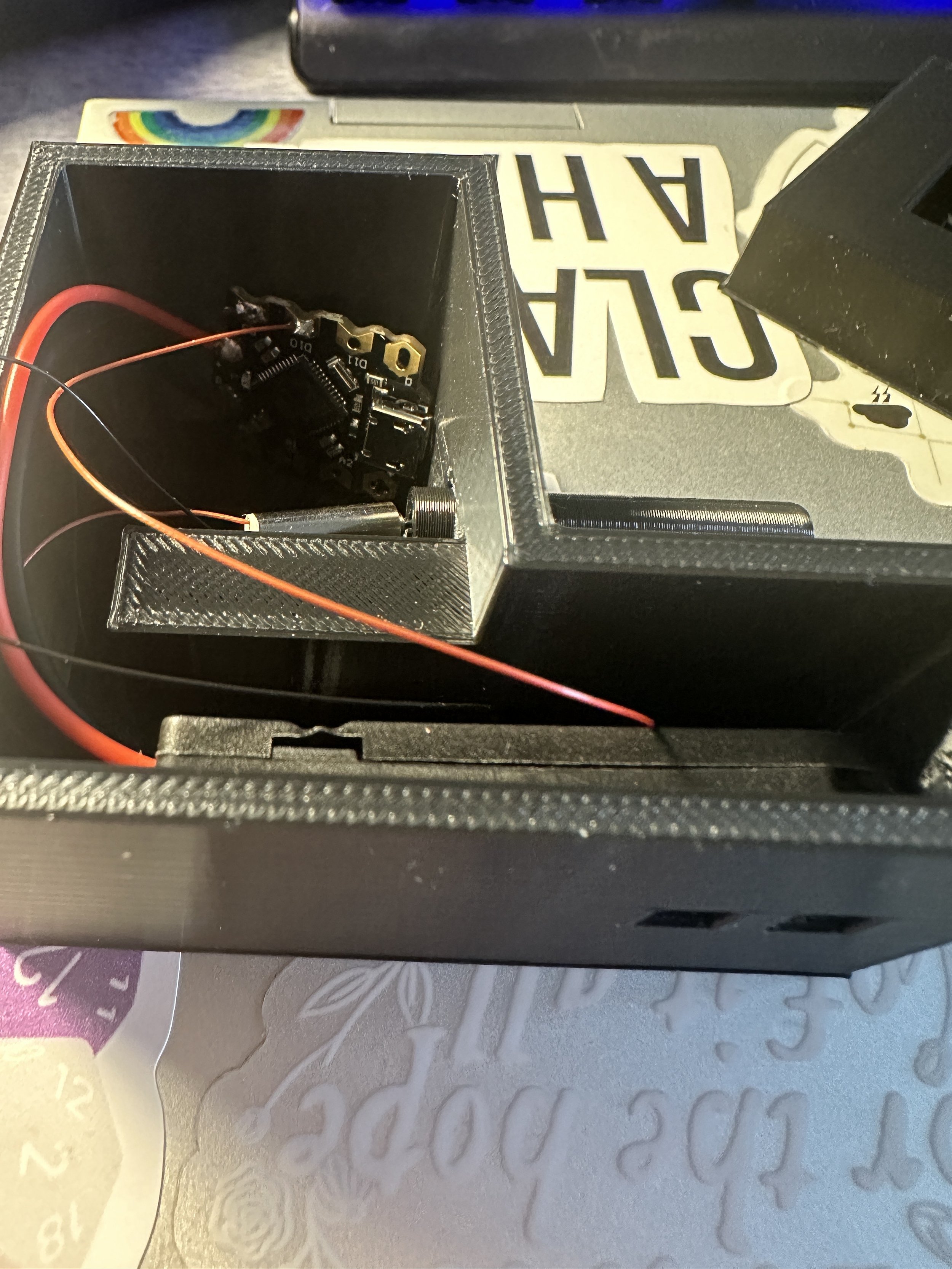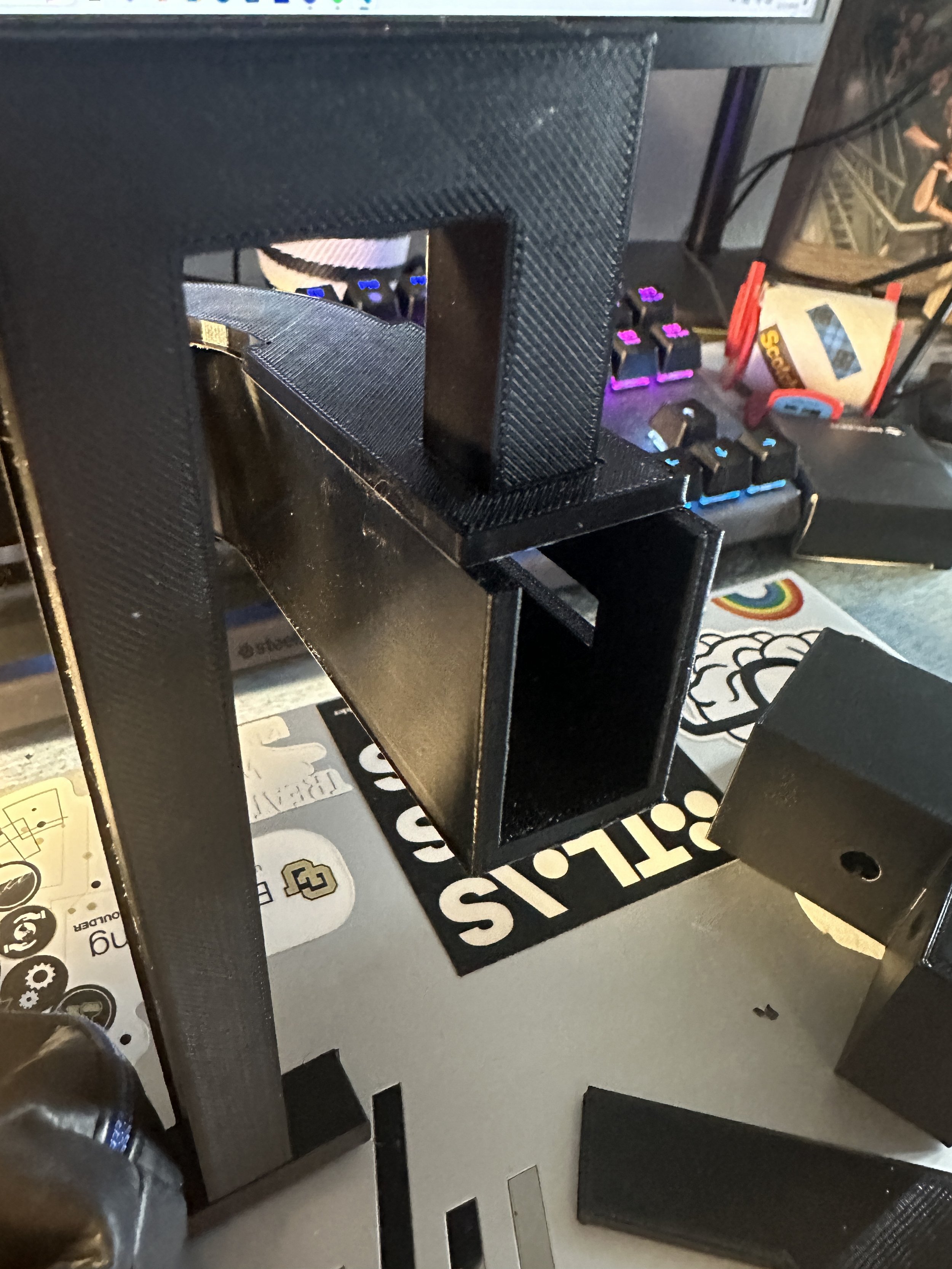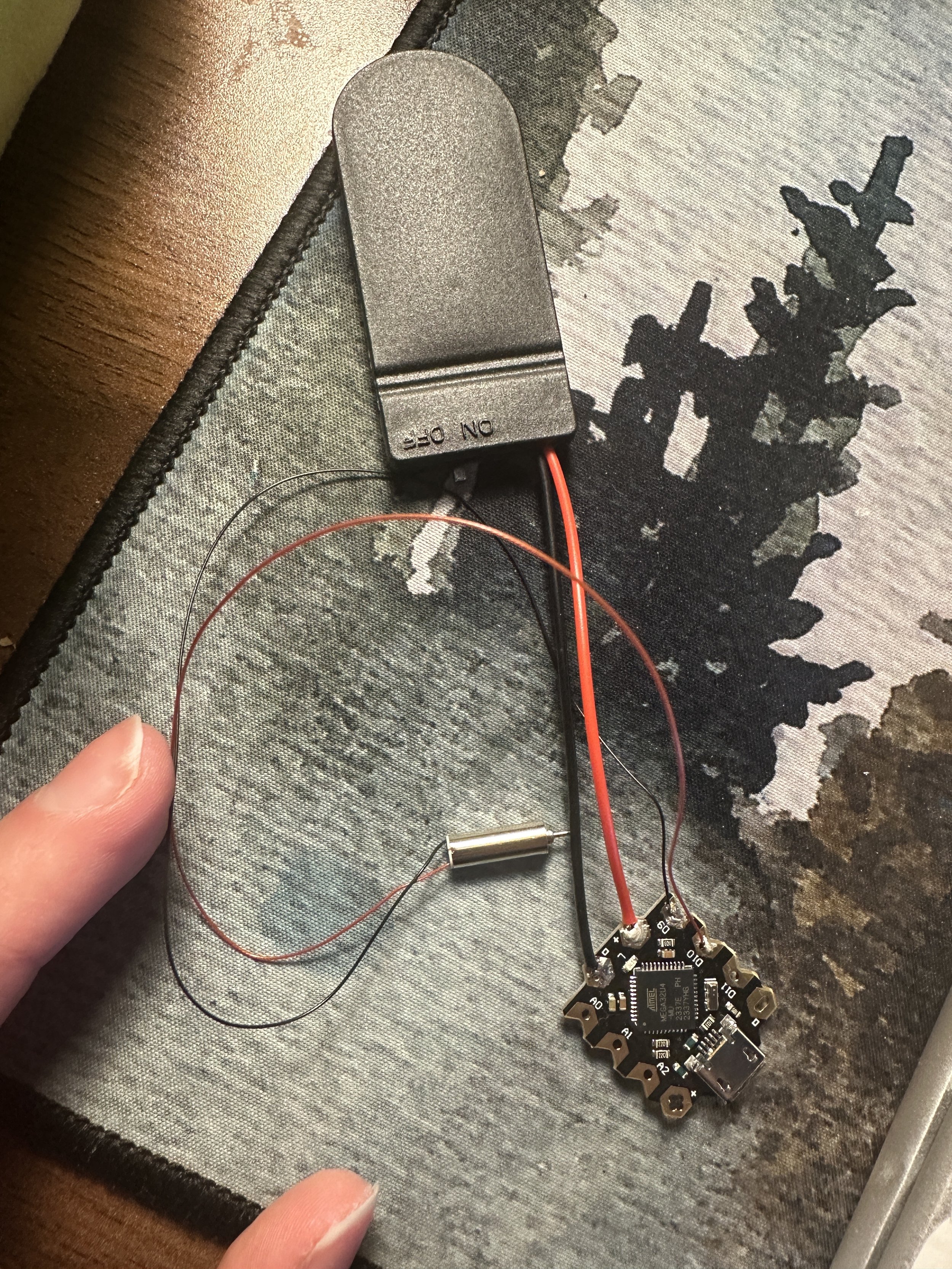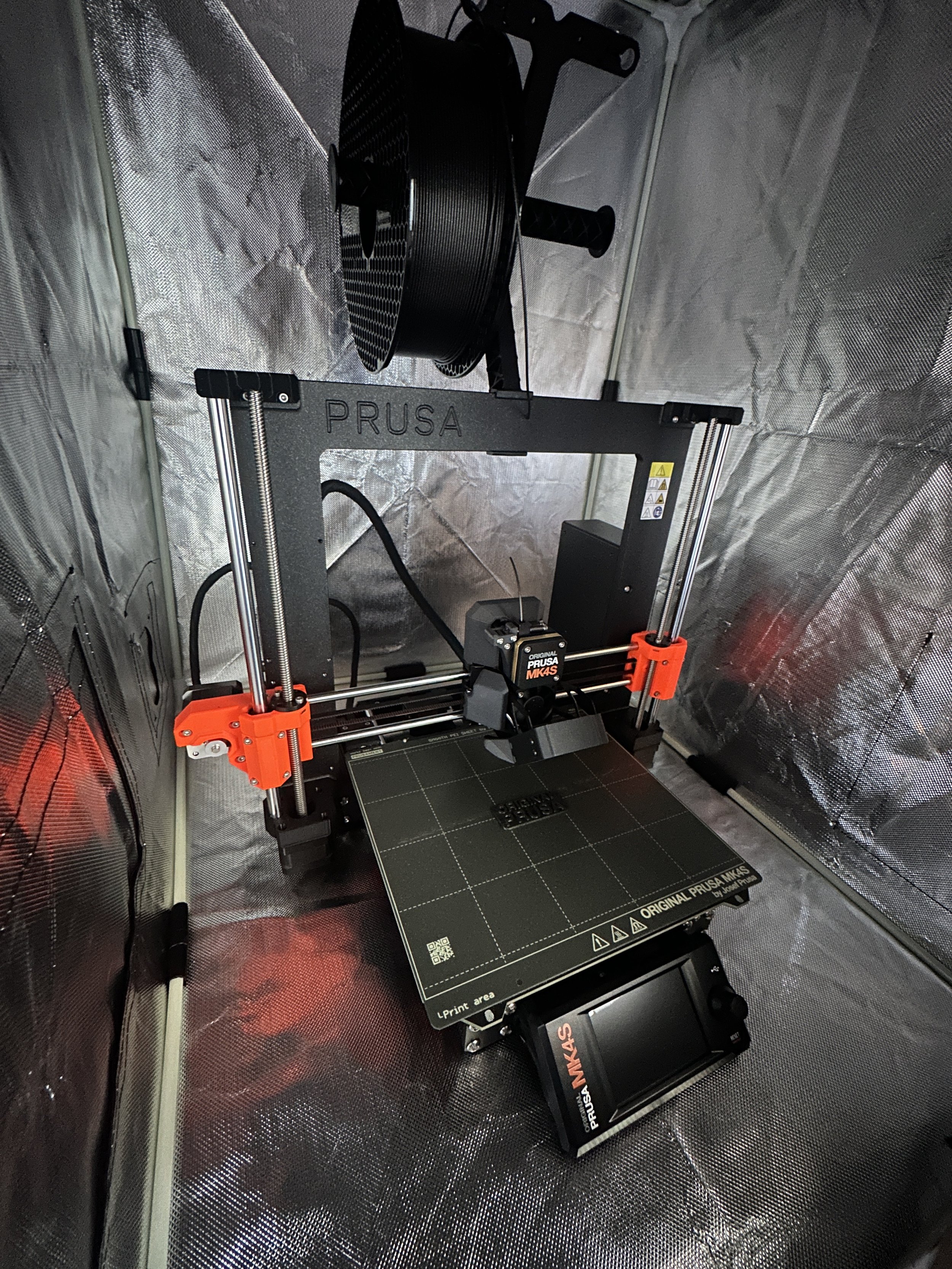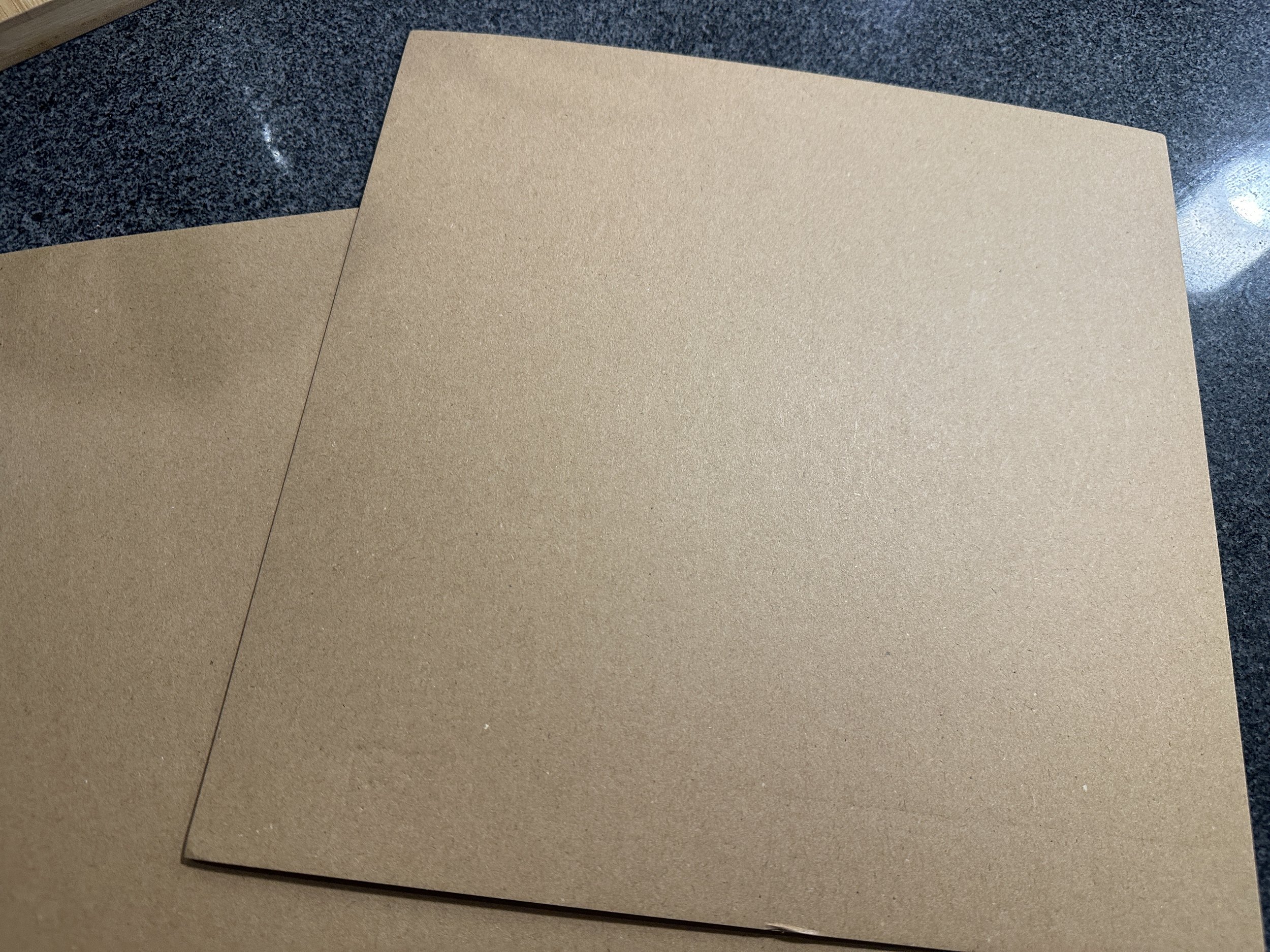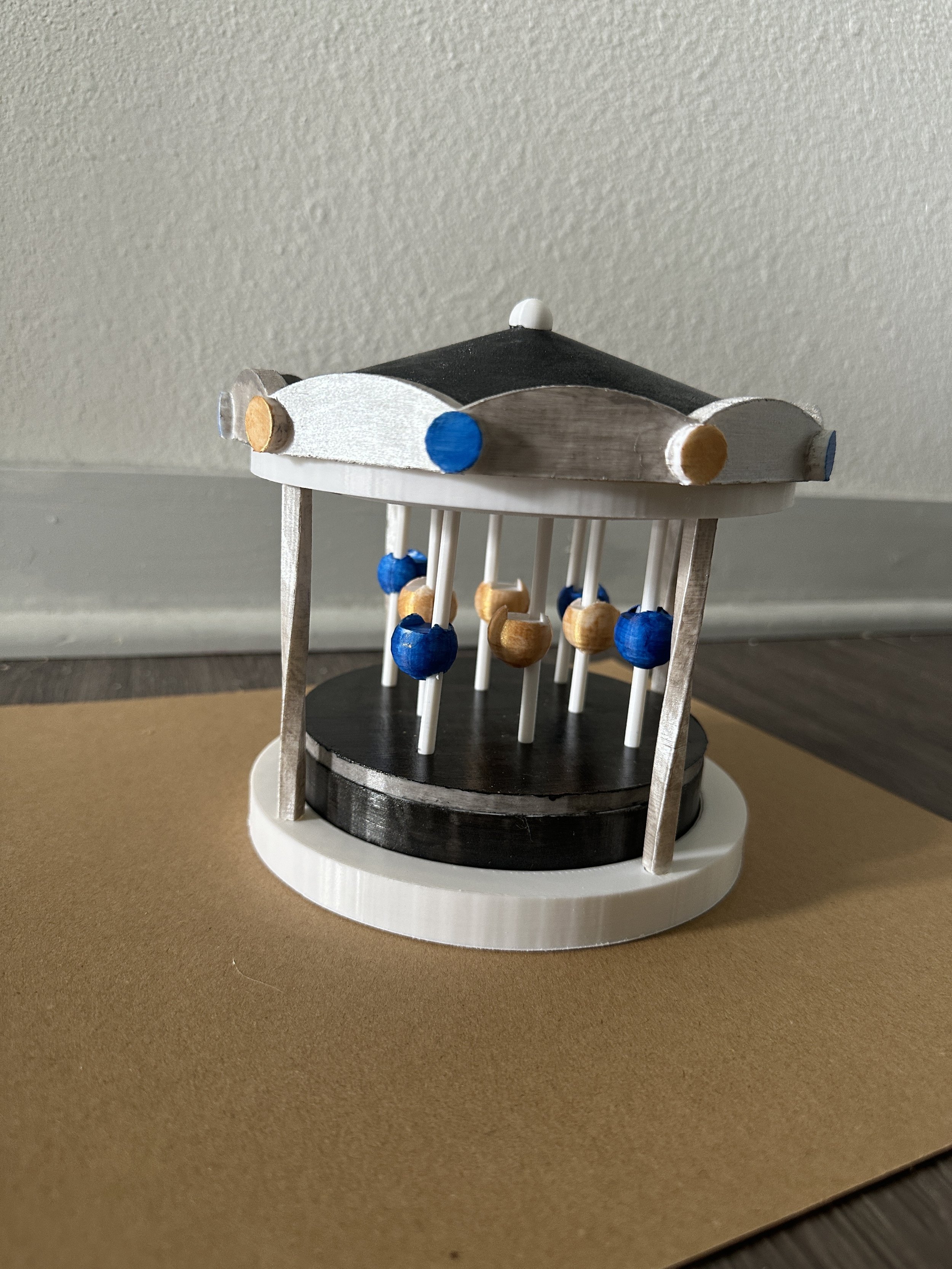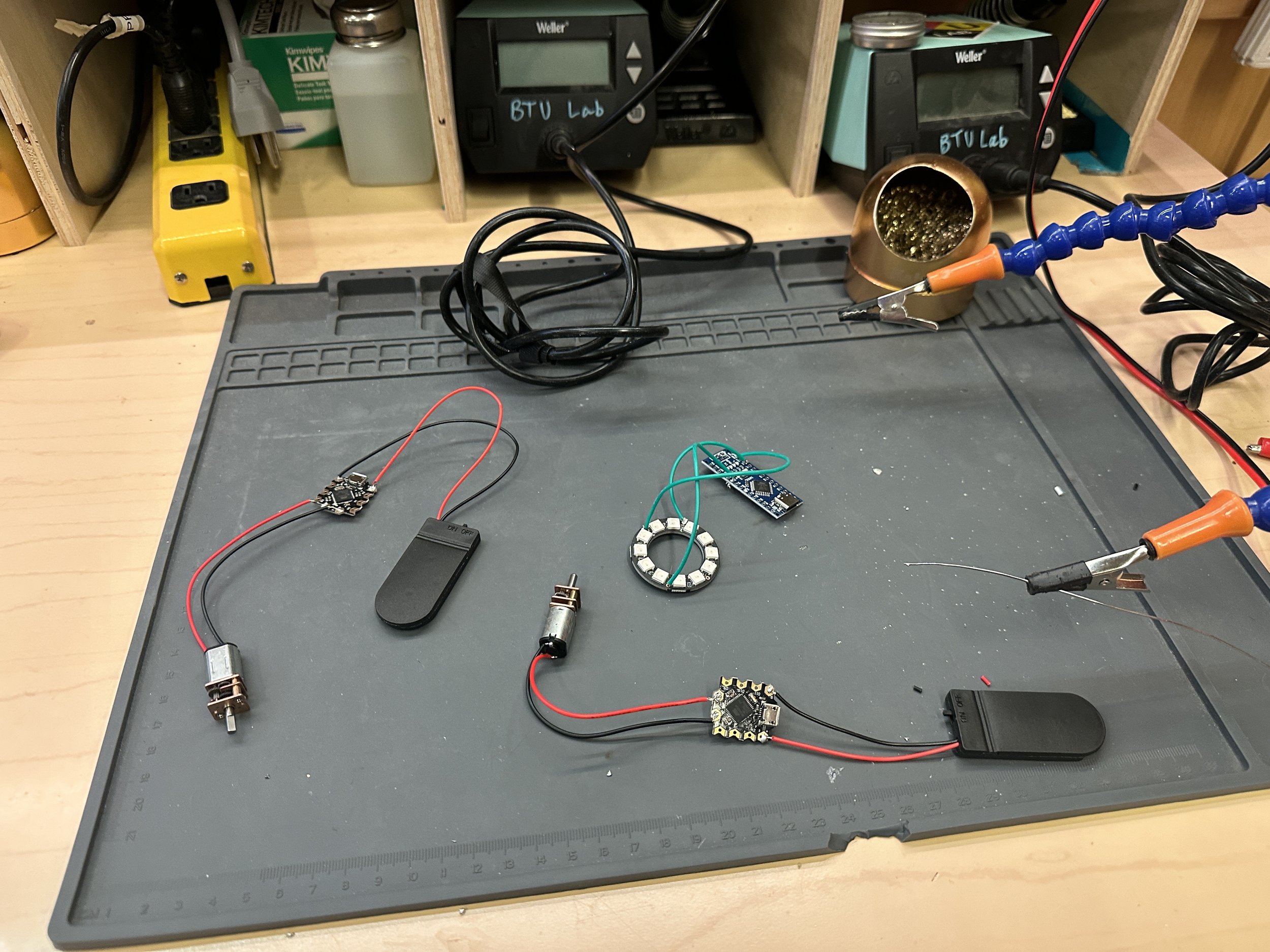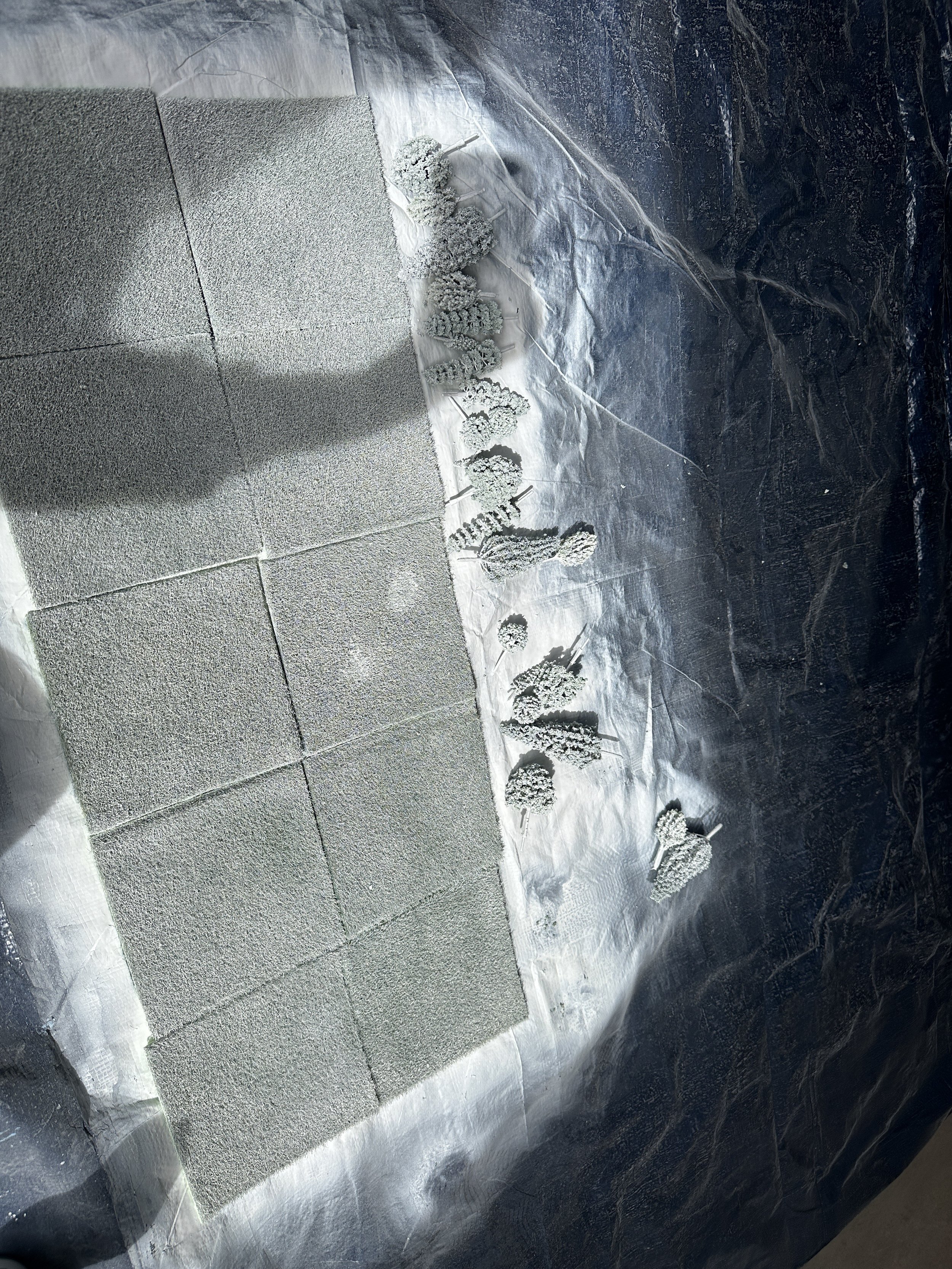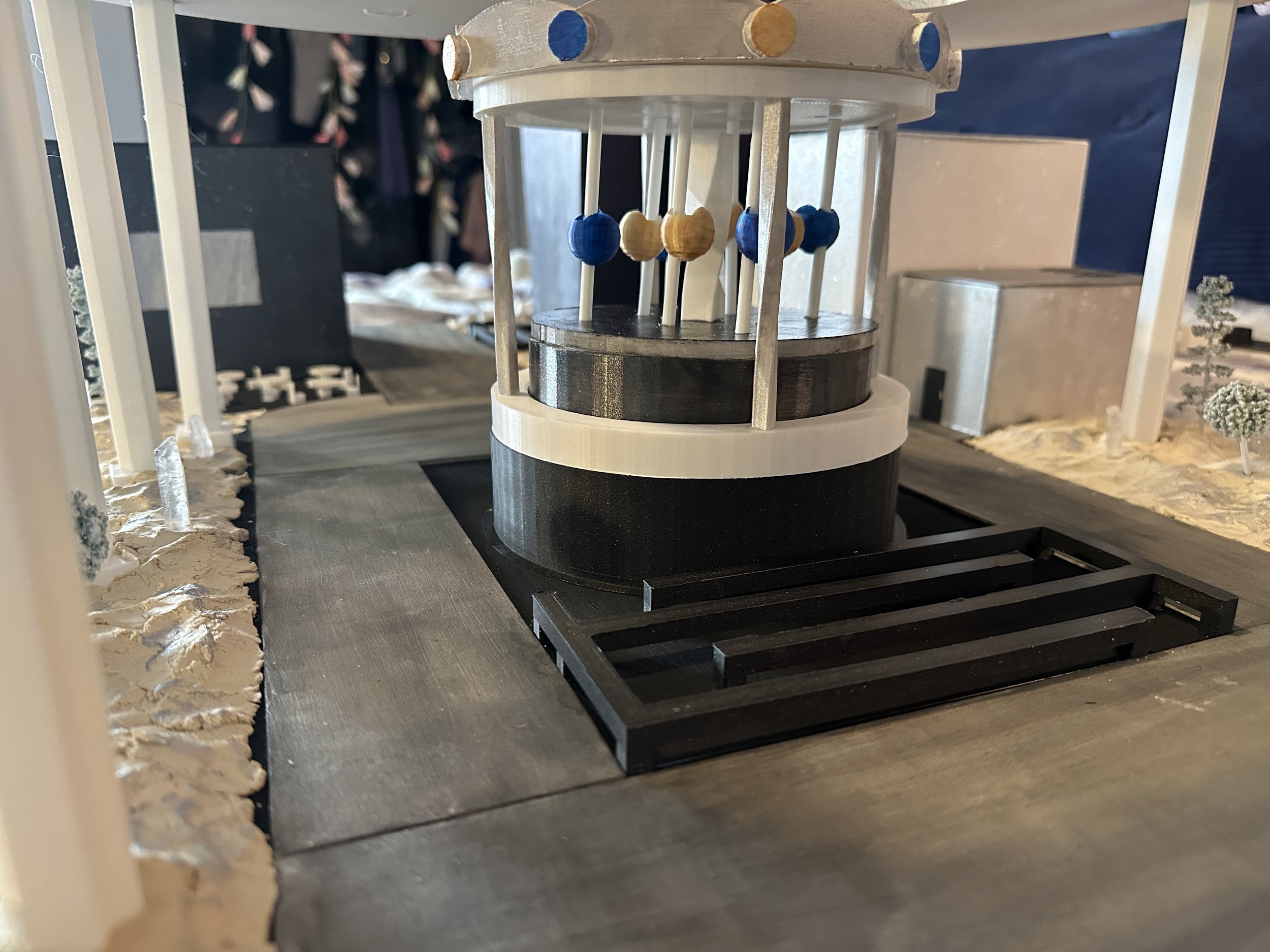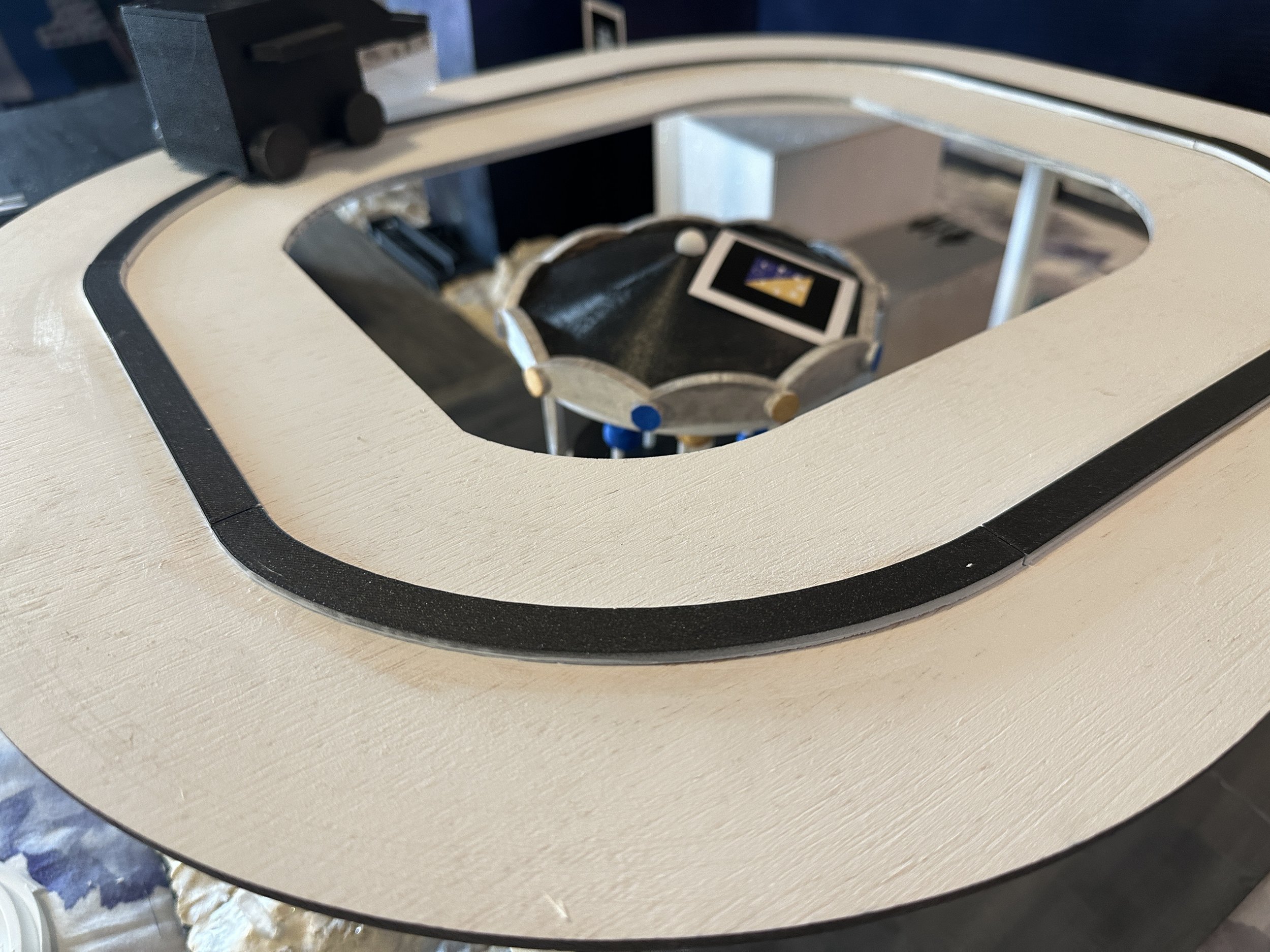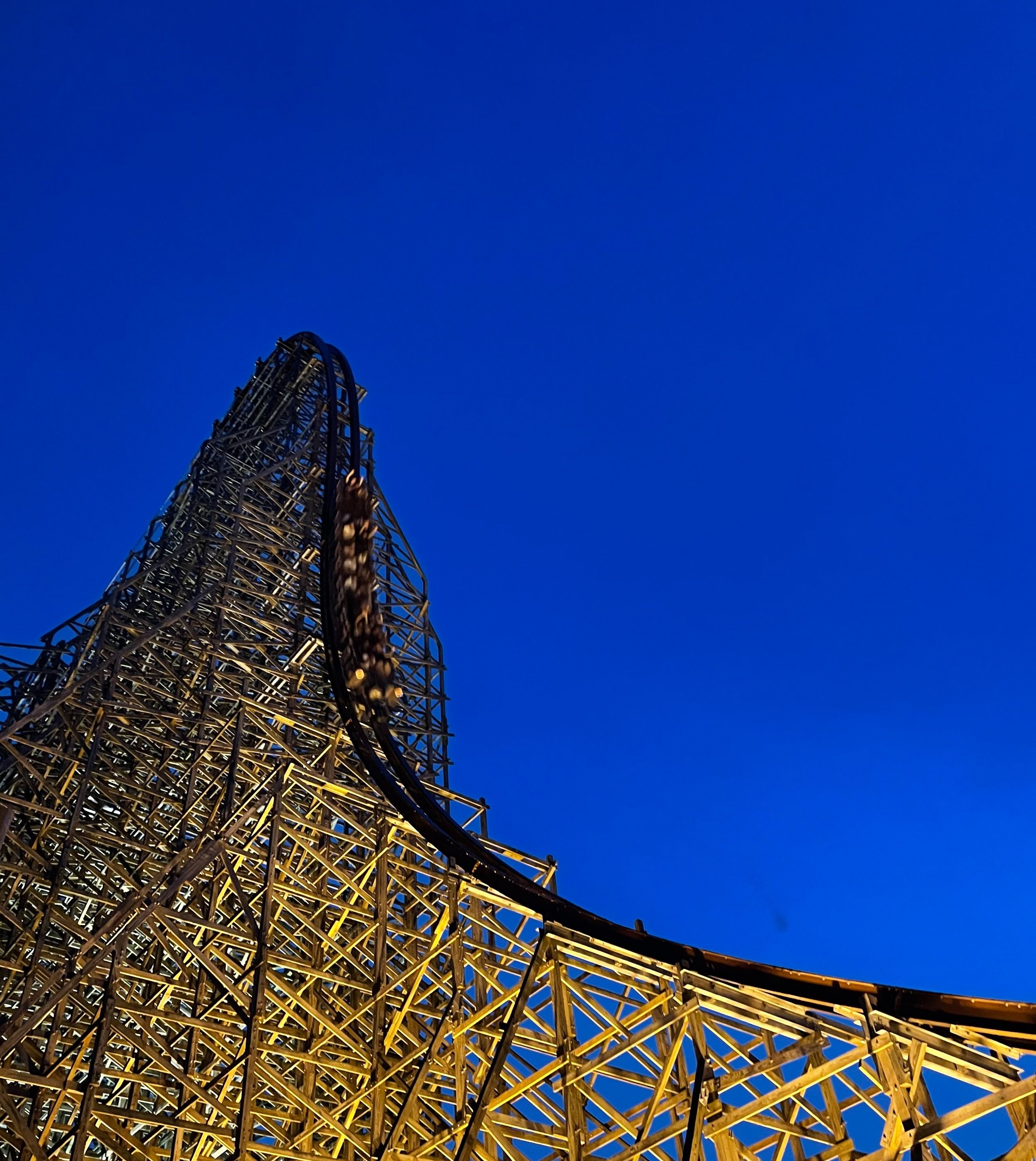
Luminara: An Interactive Theme Park Map
My interactive, physical amusement park map will represent an imaginary section/land (called Luminara, a made up planet) of an imaginary park (Galaxy Gardens). It will have both physical (the 3D map itself created using various fabrication techniques) and digital elements (someone scans the AR code on the roof of a building, and a menu pops up on a web-based app, for example). This project is aimed at theme park goers of all ages to be both an interesting attraction to look at/further immerse them into the world of this hypothetical park as well as a useful tool to gain information about the attractions in a simple way (hopefully, the project as a whole will be more useful than current theme park map apps).
Week 01: Project Milestones
Iteration 01 (Week 03)
My first iteration will, in short, include an overall layout design through that of starting all my processes. More specifically, I will have a full layout of the map (even if it is 2D) with some sort of key for people to test/interact with. On this map, even if the rest is 2D for now, I will have have one instance of the physical to digital flow to have people provide feedback on (a 3D print of one of the attractions, its AR/QR code, and the thing (link) that the AR/QR code leads to). I will also have a rough draft of a smaller “station” that relates to the attraction I will have fabricated that will test if people can find their way to it in the real world using the map. These user tests will have started to take place, so I will also have a script of sorts that lays out a general description of the project and what their motivation is for current and future testing.
Iteration 02 (Week 07)
My second iteration will, in short, be a finalized layout of my theme park land map as well as solid drafts of the digital section. To be more specific, all my 3D models for the map should be done, if not very close to being done (printed and present, but not necessarily painted/fully polished - this goes for any of the elements of the mini stations, too). I will also have more mockups / iterations of the graphic design (for the digital element), and I will have decided on final AR marker designs so they can be implemented on the map. I will also have started creating actual links for the digital section that are more closely resembling a final version of the information they will possess.
Iteration 03 (Week 10)
My third iteration will, in short, be a fully finished version of the 3D map component (painted and designed) and a close-to-done version of the digital component. With the map and physical stations completed (of course, touch-ups will be made here and there, but it will, generally speaking, be a final version), more of a focus will turn to creating almost final iterations of the previously worked on graphic design/digital pieces (turning to more of a focus on design choices over content at this point), and verifying the flow from the AR codes to the digital element are working smoothly.
100% Project Complete
The 100% project complete stage will, obviously, be the finalized version of my project! Any touch-ups/final things being done to the 3D map/stations will be completed, and the digital component (accessible through the map) will be fully functional and readable.
Week 2 Progress
This week, my goal was to do the following:
Create a general description in preparation for UX testing (print out or script that sets the scene and lets them know what their motivation is in broad strokes, as well as touches on the ethos and mythology of the project).
Get going on a singular 3D print of one of the attractions, its AR code, and the thing the AR code leads to (connected to the previously written motivation), for the sake of that testing.
Start working on lists/logistics to make sure I have a clear record of everything I am going to fabricate, how big those things will be, and other relevant information.
In the end, I feel as though I completed exactly what I set out to do (nothing more or less) fairly successfully! First, I expanded upon the lore of my imaginary theme park / the specific section I am creating a map for, as well as more clearly fleshed out a layout and present attractions. That work (and full version of the image seen on the left) can be found here.
Next, I worked on the wording of a print-out for a first round of user testing. That full text can be found here.
Finally, I went through the process of creating that first example of usage flow by creating a 3D model, its AR code, and the thing the AR code leads to. Because I had created a first iteration of a carousel attraction last year, I decided to put my focus on that. So, I edited those models to be more accurate sizing/design wise (improving what I did last time by adding some important features, such as a place to put the AR code). Then, I set up a web-based app with a custom URL to create the code to scan custom AR codes and made the code for this particular ride. Some documentation of this process can be seen below. And, the GitHub repository with all the code can be found here. The actual site can be found here.
Time management wise, I think that I did fairly well. I sort of pushed it towards the end of the week and did the majority of it then, but I like working for longer periods of time rather than in a bunch of short sessions, and I have a lighter schedule towards the end of the week anyway, so I had no issues with what I did.
I integrated feedback by listening to the comments I was given by the panel last semester, in bringing in all the elements of my project earlier so that I can start testing as soon as possible (originally, I planned to go more in a one component at a time style). Between that and Sheiva’s advice, I think my progress for week two makes a lot of sense.
I think that I have started to grasp just how important spacing / measurements are going to be for this project (I have to be very precise with locations and such)! Moving forward (in the next week or two, at least), I plan to make sure I am very detailed in that regard (making sure all measurements and such are clearly stated and make sense).
Week 3 Progress
This week, my goal was to do the following:
I will have a full layout of the map (even if it is 2D) with some sort of key for people to test/interact with (do the user testing!).
I will also have a rough draft of a smaller “station” that relates to the attraction I will have fabricated that will test if people can find their way to it in the real world using the map.
I will also finish working on those lists/logistics to make sure I have a clear record of everything I am going to fabricate, how big those things will be, and other relevant information.
In the end, I completed slightly less than what I set out to do (given all the setbacks/events of last week). However, I still did my best to work on what I could and get some things done. I continued to add some logistics to my master planning document, which can be found here. I also worked on a physical 2D version of my map’s layout / a key (seen below), further worked on the website design (found here), and did some user testing (also seen below). I decided to wait on the “station” situation since I want to focus on the highly designed models and such first.
For my 2D map, I purchased a wooden board that is 3 feet by 2 feet in size (to match the digital map I made last week) and drew out the layout, complete with labels and the carousel model I have. I also created a first draft of a key for the map to make it easier for users to understand the direction I will be headed in. These can both be seen below.
In terms of the user testing, I had a few potential “theme park goers” interact with the physical to digital flow I created a first iteration of last week, as well as look at the 2D map/key to give feedback on map appearance/wayfinding (to an extent, at least). I read them a sheet of context, then asked some questions about “what they expected to happen” when they were about to do an interaction as well as what feedback they had after it did happen. A summary of the feedback can be seen below.
After opening the link, I would probably expect a banner that says something like, hello this is the correct webpage! This is how you access the AR elements! And then you could dismiss the banner but maybe a thing stays in the corner that you can click on incase you forgot all the instructions or clicked the x before actually reading it. I do think explaining the AR a little bit is good; casual observer might have problems with only a little bit of context.
In terms of the AR, I would expect to have some kind of overlay (since the code is on the map) maybe showing a "you are here" kind of pin along with buttons for each ride/area showing the lore.
After scanning the AR code, I would expect a thing to pop up that either has words and pictures and lore or that you interact with in some way. If it’s like a video or something that has a fixed time limit then I would expect it to go back to the camera afterwards, otherwise I would expect a little x to take you back after you’ve done the thing so you don’t have to retype the website. I liked how the pop up worked, I think the video and animation idea is really cool.
When you center the AR code, I'd assume I'd see a button to learn more about the lore for whatever it is I'm scanning.
I think the scan should have a button rather than directly linking to that page so you don't accidentally open a page if you hover over the wrong thing.
Because it is 3D, I think little 3D street-sign-like signs would be useful. Otherwise, I think the color coding makes a lot of sense and colored icons are good for the colorblind.
Looks lovely! Having the AR logos be themed is a nice touch.
I think that color coding different things in the park is good, also having an option to click two spots and highlight a path between them would be nice if that’s possible on top of the lore stuff.
Based on the feedback, I know what the first steps I need to take to improve the physical to digital interaction (making it that you don’t scan the wrong thing, make a feature to get back to the main AR scanning page easier). I think reading out the context to the testers worked fine, but maybe next time I will have them say what their feedback is and I’ll take notes rather than them write it out, because the silences in between were a bit awkward. I’m glad they liked my custom AR codes and such, though. But, like I said, this feedback will help me continue work on making the digital element better and easier for users.
Week 4 Progress
This week, my goal was to do the following:
Create a more polished, finished version of the 2D map for more effective testing and planning moving forward
Finalize a map key to utilize in designs moving forward
Begin to fix up the digital interaction flow based on the feedback I received (and start to explore how exactly I want to utilize AR)
Officially start working on the modeling of the Flight of Luminara track ride
In the end, I feel as though I completed exactly what I set out to do (nothing more or less) fairly successfully! First, I did a little bit of introductory work for the Flight of Luminara track ride by doing some research about Arduino parts and getting a sense of how exactly I am going to model it (seen left).
Then, I got a version of my Illustrator map printed and overlayed it on the wood, so people have a better 2D visual of my map for testing purposes (seen below).
I also worked on some icons (and animations that could potentially be used) for mapping purposes:
Finally, I did some work on the AR/digital component to reflect the feedback I got (it no longer automatically redirects you, and I played around with putting an animation on the code itself):
Time management wise, I think that I did fairly well. It’s certainly hard having to manage all that I am doing in my life right now, but I think that I am doing a decent job at making steady progress!
I integrated feedback by listening to the comments my testers gave me and integrating them into my digital design.
There were some setbacks in terms of code not doing what I wanted it to do, but I think I’ve definitely learned more about how AR works because of that!
Mentor Review #1
with Zack Weaver
The recording of my interview can be found here: ZackInterview.mp4
Here is a bullet point summary of what we discussed:
I first walked Zack through my Iteration 1 presentation so he was clear on where I was at. I asked if he had any general advice in regard to the processes I have been taking and such, to which he said that it seemed like I was managing everything pretty well!
I then started to ask him specific questions about things I wanted his advice / help with.
Specifically, I was looking for some feedback / direction on how to best model “the Flight of Luminara” track ride.
He gave me a lot of good physical computing and modeling advice to achieve what I am going for. He confirmed my suspicious that using a small motor and have a wheel drive each individual cart around seems like the easiest solution. He helped me envision a ski-lift style cart that could move on its own, with or without a microcontroller. We discussed some of the logistics, and, when I felt confident in knowing what I needed to do, we wrapped up!
Mentor Review #2
with Chris Hill (previous ATLAS graduate student who now works for Disney Imagineering)
The recording of my interview can be found here (I missed some of the initial discussion of me explaining where my project is at, as I forgot to hit record at first): ChrisInterview.mp4
Here is a bullet point summary of what we discussed:
I first walked Chris through my Iteration 1 presentation so he was clear on where I was at. He asked some follow-up questions about my priorities with this project, just so he was totally clear on what I am hoping to do.
He first expressed the importance in deciding what information I want the map to convey, such as rider lines and what meetable characters are where, and when.
When I asked about prioritizing certain aspects of my project, since there are so many, he suggested to view the project through the lens of a portfolio project rather than a Capstone project: what skills am I most hoping to portray? Based on that, make sure I turn a good amount of focus to what I want to stand out the most.
We also discussed some software to be aware of and potentially integrate, as they are used in the professional themed entertainment industry a lot (TouchDesigner, computer vision in general)
We also talked about how to successfully pitch my project, in framing it around what I am improving based on what already exists in the industry.
We then discussed my priorities again and how the interactions will be the thing that ties the production design and AR elements together.
He expressed that having a few main AR interactions that really emphasize what it can do and be really solid examples is a good idea rather than getting lost in the weeds of designing too much.
He suggested looking at theme park apps and even on Reddit to see what people were complaining about in regard to current interactions, so I can directly pull some of those to improve upon.
After that, he said that he’d be happy to meet again and we wrapped up!
Week 5 Progress
This week, my goal was to do the following:
Follow up with my outside mentor to schedule a meeting time. Do some 3D model planning and look at Arduino parts to implement into the designs
Continue work on 3D model planning / creating
Potentially do some work on the AR planning / iterations
Meet with my mentors!
In the end, between going home for a couple days and then being stuck in an airport for 6 hours yesterday, I didn’t get quite everything done that I originally planned to, but I still feel happy with the progress I made.
To start, I did in fact meet with two mentors and get some great/helpful feedback. The details of those discussions can be found just above this section of the blog.
On top of that, the other main thing I did this week was go full force at modeling my track ride. Some more details of that can be seen below.
I started the modeling of the ride by roughly sketching out an initial idea of how I wanted it to work (with little motors driving the top of the car along the track). From there, I went to Rhino to model it. Then, I went to the BTU to do a first prototype print to see what I thought of it. It was a little bit bigger than I was hoping, so I went back to the drawing board with Zack and decided on a new design, which I am currently working on modeling officially.
Time management wise, I think that I less well than other weeks, but, given the extremely busy weekend and draining time at the airport I had, I think that I did the best I could!
I integrated feedback by listening to the comments my mentors gave me and noting them for future iteration edits. I also directly integrated Zack’s feedback into the new track ride design I’m working on.
There were some setbacks in terms of my outside life affecting my work time as well as my first iteration of my track ride not being exactly what I wanted it to, but I am making strides to improve it in the way I want it to be improved!
Week 6 Progress
This week, my goal was to do the following:
I will use Zack's feedback to continue work on the 3D modeling / physical computing of the Flight of Luminara track ride. I hope to first test a small portion of the track to ensure the new design works, and then start fully 3D printing the whole track, bit by bit.
I will continue researching and experimenting with the AR component and bringing in the characters, like what I talked to Sheiva about.
I will continue perfecting the 3D model of the carousel to be more polished so that I can 3D print it next week.
In the end, I feel as though I did a pretty good job of accomplishing my goals. I basically did, at least most of the way, all of the items I listed above. Most of my time went into perfecting the setup of the track ride (creating a new official plan based off Zack’s advice, soldering my little circuit with the little motor to make the cart move, and 3D modeling/printing parts) so I am ready to go full force at 3D printing the entire track bit by bit this week, but I spent some time on the carousel (adding to the original design in Rhino so I can reprint that this week) and the AR as well (testing out an “Unlock Character” button that plays an animation). I also ordered chipboard so I can model buildings this upcoming week.
Time management wise, I think that I did pretty well. I felt good about how I worked on stuff this week.
I integrated feedback by incorporating Zack’s advice directly into my new track ride design.
There were some setbacks in terms of traveling to and from campus specifically to 3D print parts (it’s fairly inconvenient, especially when the weather is bad like it was this weekend), but I managed to do what I needed to anyway!
Week 7 Progress
This week, my goal was to do the following:
I will model the entire track ride and start to print it bit by bit, based on a new antique-car based design after the setbacks the original one was causing me.
I will finish the more designed 3D model of the carousel, and print that.
I will model the buildings for the map with chipboard.
I will continue to improve upon the AR component, and creating assets for it.
In the end, I mostly did what I set out to do. I did a lot of 3D printing (and the entire setting up of my brand new 3D Printer that arrived on Friday). This included switching to the white filament I bought to use for final prints (so I can paint them easier). I worked on the AR component in setting up 3D models with animations. I started to work with the chipboard to create model buildings for the map, too.
Time management wise, I think that I did pretty well. I felt good about how I worked on stuff this week.
I integrated feedback by incorporating Sheiva’s thoughts on the AR component to make it more character-oriented.
There were some setbacks in terms of coding struggles, but I’m doing my best to push through!
Week 8 Progress
This week, my goal was to do the following:
I will model the entire track ride (rather than a singular test track part) and start to print it bit by bit, now that I've tested the design.
I will finish the more designed 3D model of the carousel, and print that.
I will continue to improve upon the AR component, and creating assets for it.
In the end, I mostly did what I set out to do. I did a lot of 3D printing with the white filament I bought for final prints. I worked on the AR component in fleshing out the interaction more. I continued to work with the chipboard to create model buildings for the map, too (and source materials to paint them [and everything]). Finally, I created the needed documents to do user testing this coming week.
Time management wise, I think that I did pretty well. I felt good about how I worked on stuff this week.
I integrated feedback by incorporating Sheiva’s thoughts on the AR component into my design.
There were some setbacks in terms of coding struggles and just having a lot to manage in general, but I’m doing my best to push through!
Week 9 Progress
This week, my goal was to do the following:
I will conduct some user testing to get some more feedback on the current state of my project.
I will paint the carousel so it is almost picture-perfect.
I will clean up the UX for the carousel digital interaction so it is close to done.
I will continue to 3D print/source parts for the rest of the map.
I will model another character for another interaction.
In the end, I mostly did what I set out to do. I did some user testing (detailed below), painting, and digital component work.
In terms of the user testing, I had several members of CU’s new TPED (Theme Park Engineering and Design) club run through the current version of the physical to digital interface. The feedback I got was as follows:
Incorporate dialogue for the characters- text or audio
Animate the characters in some capacity to feel more engaging
Develop it as a game/scavenger hunt slightly more
These ideas are all ones that I had previously or am working to incorporate, so that works out well!
Time management wise, I think that I did pretty well. I felt good about how I worked on stuff this week.
I integrated feedback by incorporating the thoughts that my clubmates had into my plan moving forward.
There were some setbacks in terms of coding struggles and just having a lot to manage in general, but I’m doing my best to push through!
Week 10 Progress
This week, my goal was to do the following:
Hammer down a meeting time with Chris (I have talked to him, just need to settle on a time this week)
Start piecing things together officially (finish touching up paint jobs)!
Continue touching up the digital element / animations (in tandem with the feedback I received)
And, I worked on just that. I finally got animations working on AR codes. I also talked with Chris Hill once again to get some feedback on how to frame my project as well as his thoughts on the current state of my digital element. I also did some of the soldering for the physical computing elements.
Mentor Review
with Chris Hill (previous ATLAS graduate student who now works for Disney Imagineering)
Part of my talk with Chris can be found here (I forgot to start recording at the very start), but the summary of what we discussed is as follows:
We talked about the idea of framing the project concisely around guest appeal that doesn’t cost extra
We also spoke about AR and what capabilities it has in general
He mentioned that he liked the idea of framing the digital component as a scavenger hunt of sorts
Mentor Review
with Rachael Snow (Production Designer at Universal)
And, I completely forgot to record the conversation I had with Rachael, unfortunately! But the summary of what we discussed is as follows:
We talked about general production design advice/techniques (painting, et cetera) for most of our time, as I wanted to get some feedback in that realm from a professional
We also discussed the importance of framing the project. I brought up the ideas that Chris and I had, and she liked them.
Time management wise, I think that I did pretty well. I felt good about how I worked on stuff this week.
I integrated feedback by incorporating the thoughts that my clubmates had into my digital element, as well as thought through how to better frame my project via what I was told by the expert reviewers and Chris.
There were some setbacks in terms of coding struggles and just having a lot to manage in general, but I’m doing my best to push through!
Week 11 Progress
This week, my goal was to take all these components I’ve been working on and put them together once and for all. And, I did just that. I have a map that has all the things on it now!! I took some production design advice from Rachael to create some finishing touches, and went from there. And, like I said, there is a map now!
Time management wise, I think that I could’ve done a bit better, as a lot of the construction happened relatively last minute on Saturday/Sunday, but I pushed through and made it happen.
I integrated feedback by incorporating the thoughts that Rachel provided about the production design as a whole.
There were some setbacks in terms of getting everything working/looking how I wanted it to, but I got through it!






